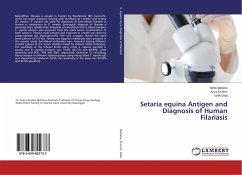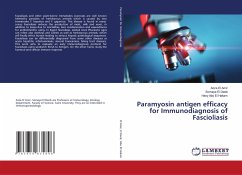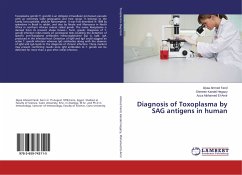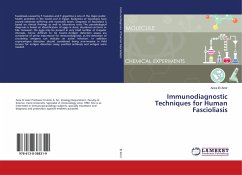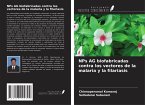Bancroftian filariasis is caused in human by Wuchereria (W.) bancrofti, which has major antigenic sharing with Dirofilaria (D.) immitis and Setaria (S.) equina. S. equina was used for diagnosis of bancroftian filariasis in human in comparison to D. immitis. Serological diagnosis of filariasis is generally more reliable than detection of microfilaria (mf) in blood samples. S. equina antigen was prepared from the adult worm. Fractionation of both whole S. equina crude antigen and imported D. immitis was done by polyacrylamide gel electrophoresis. The two antigens shared the same band pattern of 112 kDa. Ninety two Egyptian individuals were grouped in the present study. Anti-filarial antibodies were detected among different studied groups in the serum samples tested by indirect ELISA technique. The sensitivity of the indirect ELISA using crude S. equina, purified S. equina and D. immitis antigens was 78.6%, 85.71% and 80.95%, while specificity was 66%, 76% and 80%, respectively. Detection of circulating filarial antigen in different studied groups using anti-purified S. equina IgG was measured by sandwich ELISA, the sensitivity of the assay was 80.95% and 92.0% specificity.
Bitte wählen Sie Ihr Anliegen aus.
Rechnungen
Retourenschein anfordern
Bestellstatus
Storno

